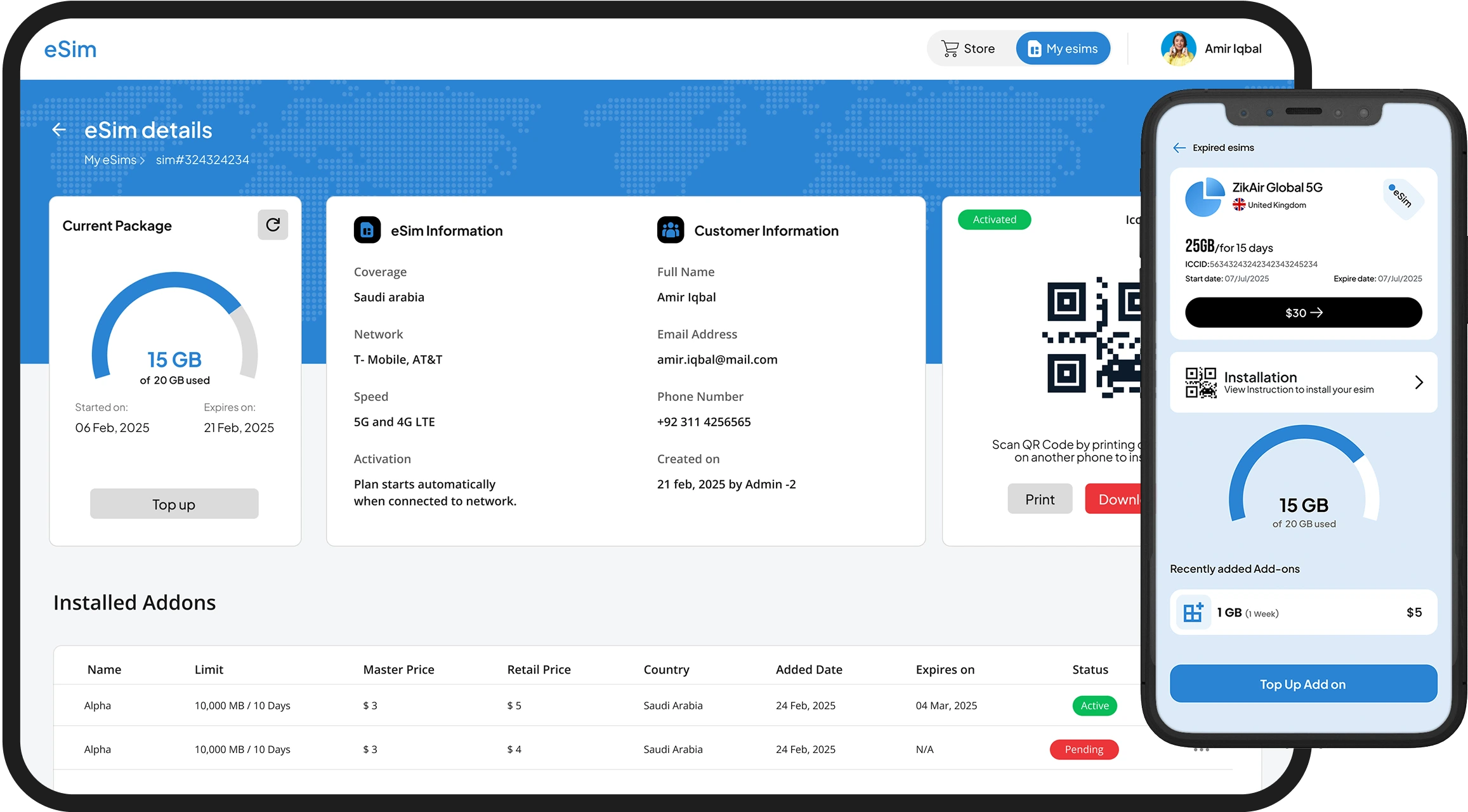Hey Folks!
The eSIM business has become one of the most profitable sectors in telecom and digital connectivity. With global adoption skyrocketing, operators, startups, and even device makers are entering this fast-growing industry. But why is eSIM business profitability so high compared to traditional SIM cards? Let’s break it down step by step.
1. Rapid Market Growth: eSIM Adoption is Booming
The global eSIM market is expanding at lightning speed. In 2023, only 10% of smartphones used eSIM, but by 2030, more than 75% of devices are expected to support it. That’s a compound annual growth rate (CAGR) of around 40%.
- Market value is projected to grow from $9 billion in 2023 to $16+ billion by 2030.
- eSIM subscriptions are forecasted to grow from $1.5 billion in 2024 to $7.2 billion in 2033, with a CAGR of 19.2%.
This rapid adoption makes the eSIM business highly profitable because every new smartphone, smartwatch, car, or IoT device is another potential eSIM customer.

2. Lower Costs and Higher Profit Margins for eSIM Providers
One of the strongest reasons behind eSIM business profitability is cost savings. Physical SIM cards require plastic manufacturing, packaging, distribution, and retail staff. Every step adds cost.
By contrast, eSIM technology is entirely digital:
- Customers activate plans instantly via QR codes or apps.
- Subscriber acquisition costs can drop by up to 40%.
- Telecoms save millions annually by eliminating shipping and storage expenses.
This digital-first model allows operators and MVNOs to run leaner operations and enjoy higher profit margins.

3. Improved Customer Experience: A Driver of Profitable eSIM Adoption
Happy customers stay longer, and that’s a big reason the eSIM business is profitable. Unlike physical SIMs, eSIMs make life easier for users:
- Instant activation: Get connected in minutes without visiting a store.
- Seamless switching: Users can change carriers digitally without SIM swaps.
- Multi-device support: Phones, tablets, smartwatches, and even cars can all share one data plan.
The result? Stronger customer loyalty, lower churn, and greater long-term profitability.

4. eSIM Powers IoT, Automotive, and Wearables
The eSIM industry isn’t just about smartphones it’s also fueling the Internet of Things (IoT), connected cars, and smart devices:
- Automotive eSIM: Connected cars rely on eSIMs for diagnostics, navigation, and over-the-air updates.
- IoT devices: Smart meters, logistics trackers, and industrial sensors need scalable, global connectivity something eSIM provides perfectly.
- Wearables: Smartwatches and health trackers are becoming key drivers of the eSIM ecosystem.
This expansion into new industries creates profitable opportunities beyond telecom operators, proving why the eSIM business is so profitable.
5. Travel eSIMs: A Game-Changer for Roaming
The travel industry is a huge contributor to eSIM business profitability. Traditional roaming is expensive, but travel eSIMs solve that problem:
- Plans are often 70–90% cheaper than roaming.
- Travel eSIM adoption is projected to grow at a 47% annual rate, reaching 22% of global trip volume by 2028.
- Companies like Airalo already serve over 20 million users worldwide.
This surge in travel eSIM demand shows why profitable eSIM businesses are growing rapidly in the travel tech sector.

6. Sustainability and Brand Value
Another major advantage of the eSIM business is its eco-friendly appeal. Since eSIMs eliminate plastic SIM cards, packaging, and shipping, they:
- Reduce carbon emissions.
- Appeal to eco-conscious consumers.
- Help telecoms position themselves as sustainable leaders.
This boosts brand loyalty and adds long-term value.
FAQs About eSIM Business Profitability
Telecom operators, MVNOs, IoT providers, travel eSIM companies, and device manufacturers.
Yes, eventually. Apple already launched eSIM-only iPhones in the U.S.
Absolutely! Digital-first MVNOs and travel eSIM providers can launch with low costs and high scalability.
Final Thoughts
The eSIM business is profitable because it reduces costs, improves customer experience, and opens new revenue streams in IoT, automotive, and travel. Add in sustainability and market growth, and it’s clear why the eSIM industry is set to dominate global connectivity.


